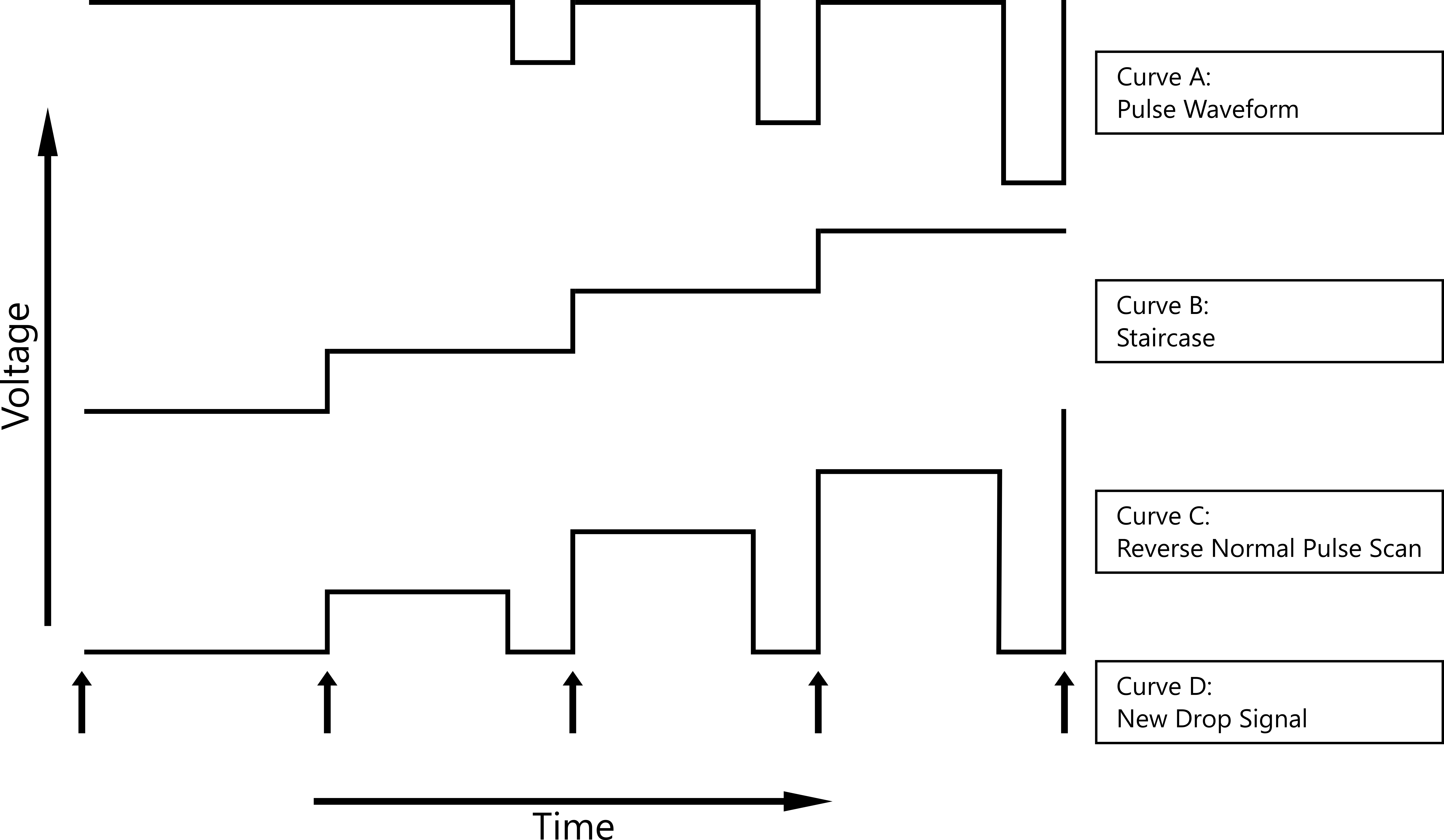Description
Reverse Normal Pulse Voltammetry (RNP) is used for both quantitative chemical analysis and to study the mechanism, kinetics, and thermodynamics of chemical reactions. It is often used with a Dropping Mercury Electrode (DME) or with a Static Mercury Drop Electrode (SMDE). When used with either of these electrodes it is often called Reverse Normal Pulse Polarography (DPP), although this name is often used for the general technique.
Other techniques, such as cyclic voltammetry, are generally preferred over RNP for mechanistic and kinetic studies. However, there are many references in the literature for mechanistic and kinetic studies using RNP.
RNP may be performed on a stationary solid electrode, a rotated electrode, a SMDE, or a DME. The RNP script in the Pulse Voltammetry software provides for mercury-drop generation, solution de-aeration, and experiment-sequencing suitable for the most common applications for reverse normal pulse voltammetry or polarography.
Choose the type of electrode in the Electrode Setup Panel.
Additional sequencing steps suitable for anodic (or cathodic) stripping are implemented in the Pulse Voltammetry’s RNS (Reverse Normal Pulse Stripping) technique. If you wish to perform the RNP experiment on a single mercury drop, you should use the RNS technique to automatically generate the single mercury-drop generation signal at the start of the experiment.
Applied Waveform and data acquisition
In a Reverse Normal Pulse voltammetric experiment, a complex voltage scan is applied to the working electrode in an electrochemical cell. The waveform is the sum of a growing pulse (Curve A in the figure below) and a staircase (Curve B in the figure below). The resulting waveform is seen in the figure below, Curve C.

Step signal for Reverse Normal Pulse Voltammetry.
The pulse and the staircase both grow by the step height with each repetition. The resulting waveform may also be thought of as a staircase that has a pulse back to the starting potential at the end of the step.